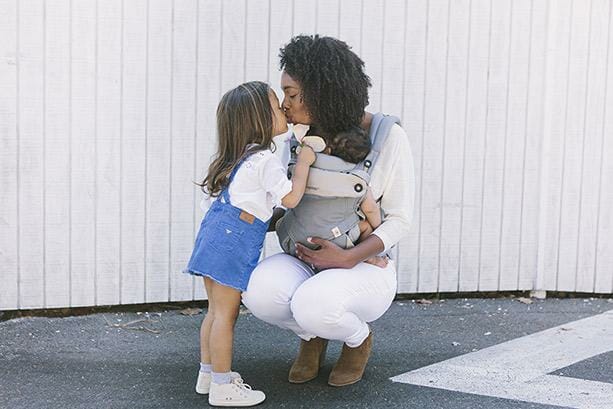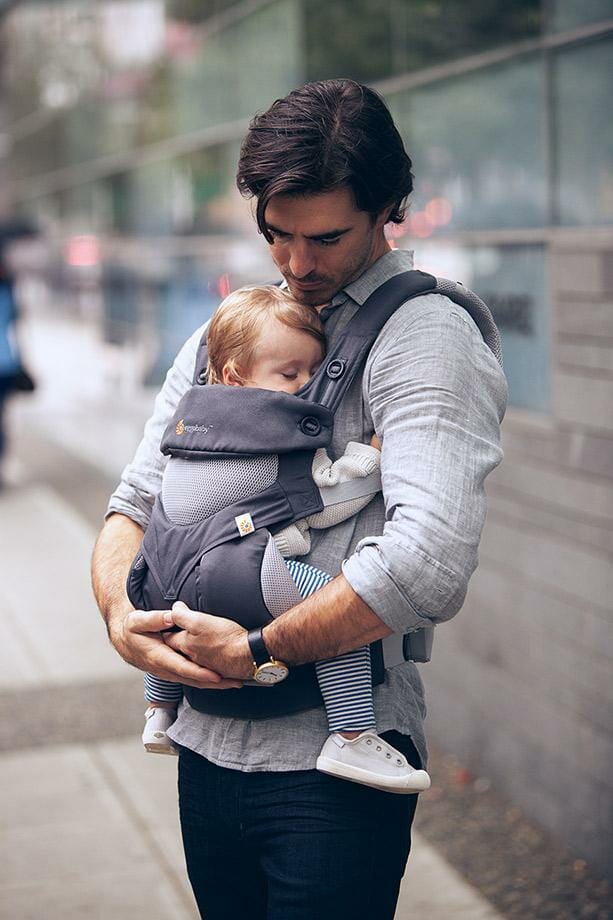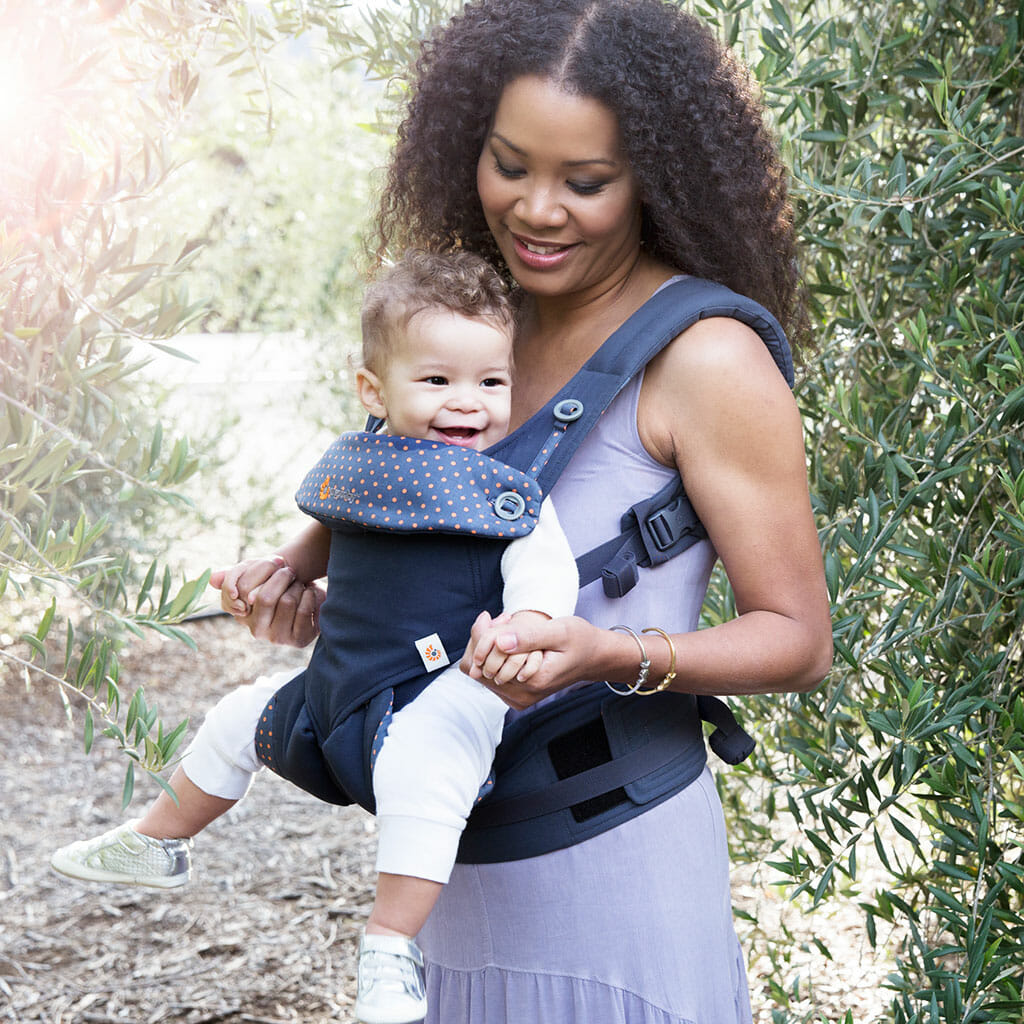
Some of us, however, have a baby who cries too frequently or too long and who is difficult to soothe despite all of our best efforts. As parents, we are designed to react strongly to our baby’s crying. We instinctively know that when babies cry, it means something is wrong with the baby that needs to be addressed. Being unable to find the root cause of the crying can create doubts of our parenting skills and create tremendous stress and frustration. A baby’s prolonged and incessant crying can unfortunately even lead some parents to perceive the baby’s crying to be manipulative and in the worst cases this belief can lead to violent outbursts from the parents. Shaken Baby Syndrome, a potential result from such outbursts, can tragically cause irreparable damage to the baby’s brain1.
In the Western world, we live in a culture that highly values independence. Some parents expect newborns to begin learning to be independent from the very moment they are born. To this end, as parents we often keep our babies separate from ourselves, in a room of their own. However, there is mounting evidence from both animal and human studies that routine separation of a baby from its parents, even at current culturally acceptable levels, comes at a high developmental price, including potential long-term effects on stress regulation, well-being, socio-emotional and cognitive function.2, 3, 4, 5
Most adults, even well-meaning ones, do not understand this concept. But babies do. So they protest separation from their only known source of warmth, nutrition and safety in the only way available to them. By crying.6

This takes us back to John Bowlby and his fundamental findings in the 1950’s, which form the bedrock of the most empirically validated branch of modern psychology, Attachment Theory. When intolerably separated, a child will initiate attachment behavior, such as crying or calling. The purpose of the attachment behavior has ONE simple goal – to bring parent or caregiver to the baby. Closeness, contact and comfort are synonymous to an infant.7
This attachment behavior of crying/vocalizing in response to separation is seen across virtually all mammals – including humans. It demonstrates – in the baby – a fundamental biological expectancy of contact with the caregiver. And for good reason: separation brings stress to multiple behavioral and biological systems in the baby, causing adaptive changes in an attempt to compensate. And many of these adaptive changes appear to be long lasting (depending on the child’s genetic profile), which is the really concerning part. These are often not merely temporary effects.,8,9
The big question, to which science currently has no definite answers, is how much contact is needed daily for how long in the baby’s life to create the best outcomes. And this question, of course, has implications for the type of caregiving we, as parents, choose to provide. So far, we only have an indication from one study on the effects of parent-infant carrying on infant’s socio-emotional development. There appears to be a strong correlation between how much carrying is done and how well the children do – in other words, more is better.5
In Jean Liedloff’s seminal book, The Continuum Concept, she describes her unique observations of the caregiving patterns of Amazon Indians and how their form of care produces unusually dignified, grounded, and kind children, as well as adults.10
Modern developmental psychology explains that for the first 4-5 months, most babies prefer to look at faces more than at objects. When crawling skills emerge, there is a marked shift in preferences towards objects and exploring the world at large.11 The Amazon Indians accommodate these stages by having more or less constant physical contact by holding babies day and night from birth until the babies, themselves, clearly signal that they want to explore the world and become physically independent of the caregiver.

The baby’s emerging exploration of the word, however, does not signal an abrupt end to parent-child contact amongst the Amazon Indians. The children come back frequently for a “refueling” of contact with short bouts of self-initiated hugs. If troubled, the children temporarily stop their exploration and demand to be carried or held until whatever has upset them has subsided.
If the idea of toting your baby around for several hours each day seems overwhelming, the easiest solution is to invest in a good quality baby carrier that is comfortable for you and your baby. There are many resources to help you find the right carrier(s) for your parenting journey – please see the listed website references below for some examples.13,14 Extended contact not only benefits your baby, but also benefits parents, as our brain and body systems respond to all the stimuli you receive from your baby.15,16,17
While most babies who experience extended contact with their parents or other caregivers cry less, there are some babies for whom even extensive contact with a primary caretaker does not provide comfort. In these cases, it is recommended that you see your pediatrician for further advice.
Bibliography
1. St James-Roberts I. Infant crying and sleeping: helping parents to prevent and manage problems. Prim Care. 2008;35(3):547-567, viii. doi:10.1016/j.pop.2008.06.004.
2. Blum D. Love at Goon Park: Harry Harlow and the Science of Affection. Second Edition edition. Cambridge, MA: Basic Books; 2011.
3. Pryce CR, Aubert Y, Maier C, Pearce PC, Fuchs E. The developmental impact of prenatal stress, prenatal dexamethasone and postnatal social stress on physiology, behaviour and neuroanatomy of primate offspring: studies in rhesus macaque and common marmoset. Psychopharmacology (Berl). 2011;214(1):33-53. doi:10.1007/s00213-010-1989-2.
4. Morgan BE, Horn AR, Bergman NJ. Should neonates sleep alone? Biol Psychiatry. 2011;70(9):817-825. doi:10.1016/j.biopsych.2011.06.018.
5. Anisfeld E, Casper V, Nozyce M, Cunningham N. Does infant carrying promote attachment? An experimental study of the effects of increased physical contact on the development of attachment. Child Dev. 1990;61(5):1617-1627.
6. Hunziker UA, Barr RG. Increased carrying reduces infant crying: a randomized controlled trial. Pediatrics. 1986;77(5):641-648.
7. Bowlby J. Attachment: Attachment and Loss Volume One(Basic Books Classics). 2nd edition. New York: Basic Books; 1983.
8. Myers MM, Grieve PG, Stark RI, et al. Family Nurture Intervention in preterm infants alters frontal cortical functional connectivity assessed by EEG coherence. Acta Paediatr Oslo Nor 1992. 2015;104(7):670-677. doi:10.1111/apa.13007.
9. Feldman R, Rosenthal Z, Eidelman AI. Maternal-preterm skin-to-skin contact enhances child physiologic organization and cognitive control across the first 10 years of life. Biol Psychiatry. 2014;75(1):56-64. doi:10.1016/j.biopsych.2013.08.012.
10. Liedloff J. The Continuum Concept: In Search Of Happiness Lost. Reprint edition. Reading, Mass: Da Capo Press; 1986.
11. Murray L. The Psychology of Babies: How Relationships Support Development from Birth to Two. Robinson; 2014.
12. Who’s in Control? – by Jean Liedloff. http://www.continuum-concept.org/reading/whosInControl.html. Accessed July 1, 2016.
13. Choosing a Baby Carrier | Babywearing International. http://babywearinginternational.org/what-is-babywearing/choosing-a-baby-carrier/. Accessed July 1, 2016.
14. Find a Consultant — Center for Babywearing Studies. http://www.centerforbabywearingstudies.com/california/#find-an-babywearing-educator. Accessed July 1, 2016.
15. Cong X, Ludington-Hoe SM, Hussain N, et al. Parental oxytocin responses during skin-to-skin contact in pre-term infants. Early Hum Dev. 2015;91(7):401-406. doi:10.1016/j.earlhumdev.2015.04.012.
16. Moberg KU. Oxytocin: The Biological Guide to Motherhood. Plano, TX: Hale Publishing; 2015.
17. Abraham E, Hendler T, Shapira-Lichter I, Kanat-Maymon Y, Zagoory-Sharon O, Feldman R. Father’s brain is sensitive to childcare experiences. Proc Natl Acad Sci U S A. 2014;111(27):9792-9797. doi:10.1073/pnas.1402569111.

